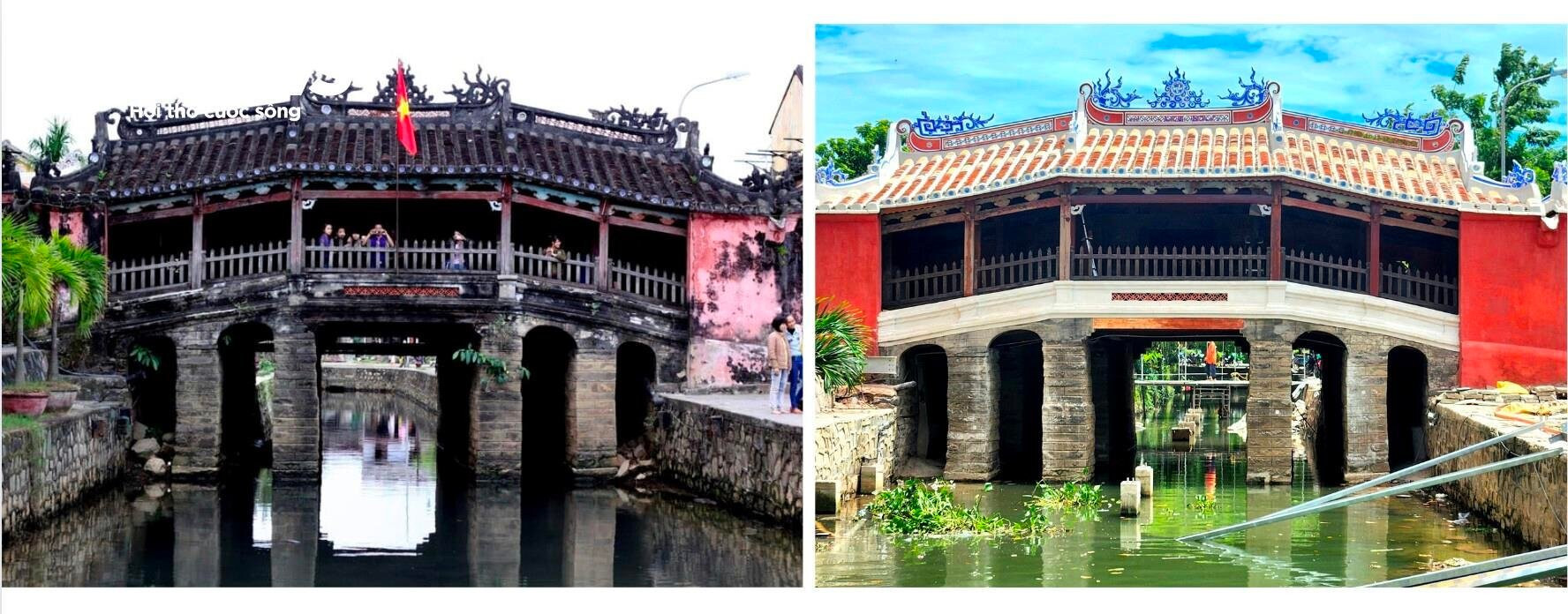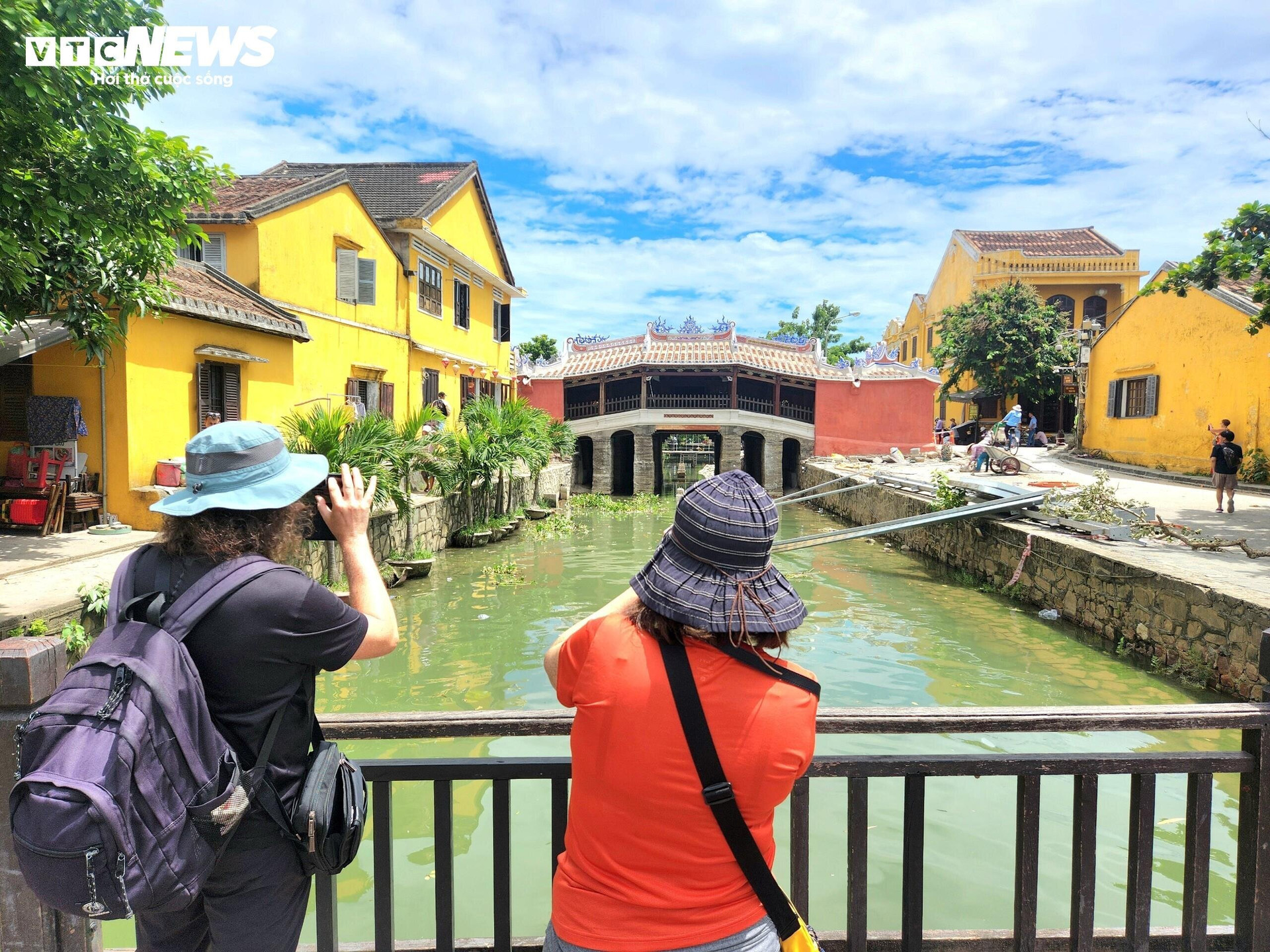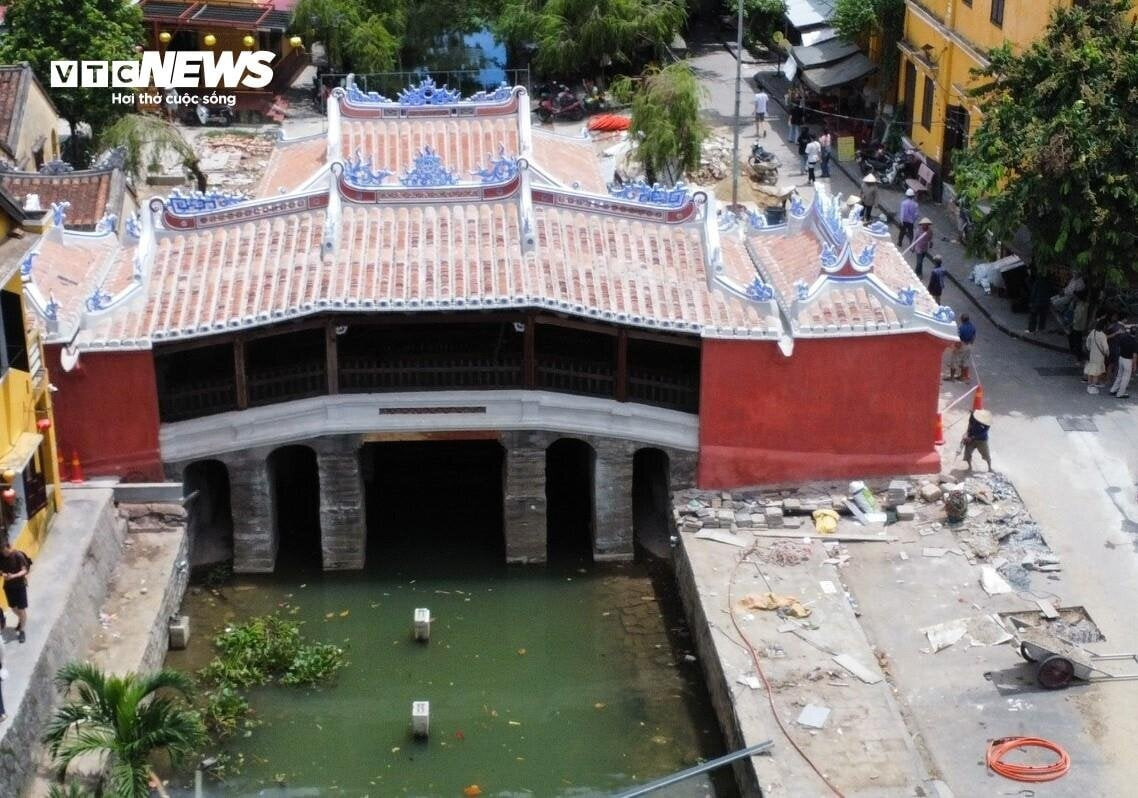Leaders of Hoi An City (Quang Nam) spoke out about the news that the Japanese Covered Bridge could not retain its ancient appearance after restoration.
The new look of the Japanese Covered Bridge after its major restoration is receiving mixed opinions from the public. Many people believe that the restoration has lost the ancient beauty of the structure considered a symbol of the ancient town of Hoi An (Quang Nam), making the bridge look strange compared to before.

Regarding this issue, Mr. Nguyen Van Son, Chairman of Hoi An City People's Committee, said that the project to restore the Japanese Covered Bridge was carried out in accordance with the procedures and principles of relic restoration and was closely monitored by experts from the Ministry of Culture, Sports and Tourism as well as Japanese experts.
During the renovation process, the city also received many opinions, then discussed carefully before continuing to implement. Therefore, the time to complete the renovation lasted more than 1.5 years (the original plan was 1 year).
Mr. Son emphasized that it is necessary to evaluate the project from a professional perspective. No project can be completely renovated without changing anything. It is important to retain the original elements and ensure the project's durability.
"A major renovation project always poses two major problems. One is to ensure its originality, that is, all the architectural parts that can still be used such as wood, floors, and railings, if they are original, should be kept. As for the rotten components, they must be replaced to ensure the solidity of the project.
Second, after completing the restoration, the above structures must be repainted for preservation.Mr. Son said.

Meanwhile, Mr. Pham Phu Ngoc, Director of the Hoi An Cultural Heritage Management and Conservation Center (the unit assigned to carry out the restoration) affirmed that the restoration has principles of restoration, especially the color of the relic.
According to Mr. Ngoc, the current wall or tile color is based on the original color of the Japanese Covered Bridge for restoration.
"The color before the restoration was the color of nearly 20 years, faded over time and not painted. Now we see it darker because of the original color. This is whitewash, not lime paint, so over time it will fade very quickly.On August 3, we will publish a book recording the entire research and restoration process for everyone to understand."Mr. Ngoc analyzed.
On his personal Facebook page, Mr. Dang Ngoc Viet - who painted more than 50 paintings of the Japanese Covered Bridge - shared that the Japanese Covered Bridge is wearing a "new coat" so we are still not used to it, but after a while, that "coat" will become gentle, soft and covered with the color of the old weather.

Since July 25, the construction unit has dismantled the entire house covered with iron frames and corrugated iron roofs, so that people and tourists can easily admire the panoramic view of the Japanese Covered Bridge relic after 1.5 years of restoration.
Many people said they felt strange with the new image of the Japanese Covered Bridge.On weekends, I often take my family from Tam Ky City to Hoi An to walk around, enjoy the cuisine and especially see the hundreds of years old relics. However, I was really surprised to see a different Cau Pagoda compared to before. Looking at the Cau Pagoda with a new, darker coat of paint makes me feel that it is modern, not ancient.Mr. MCĐ. (a resident of Tam Ky city) said.
On his personal Facebook page, MDK account raised the question:"Renovate or destroy Hoi An ancient town and tourism".
According to Ms. TKC (residing in Hoi An ancient town), the replacement and additional components during the restoration of the Japanese Covered Bridge were distinguished from the original components to avoid confusion."Do not use techniques or methods that can easily create confusion between the old and the new, but let them be stained by time. Therefore, it is understandable that people react when seeing the contrast between the new and the old after restoration."Ms. C said.
The project to restore the Chua Cau relic has a total investment of more than 20.2 billion VND, of which the Quang Nam provincial budget supports 50%, and the Hoi An city budget arranges 50%. The project is invested by the Hoi An City People's Committee, implemented by the Hoi An Cultural Heritage Management and Conservation Center, and the Monuments Conservation Consulting Center - Institute for Monuments Conservation is the consulting unit.
The restoration of the Japanese Covered Bridge focuses on three main contents: Restoring the general landscape and technical infrastructure; constructing auxiliary works to serve the restoration of the relic; digitizing the relic to serve the restoration work using 3D technology, seminars and talks.
This project started on December 28, 2022. During the restoration process, experts continued to be carefully consulted on a number of important items; at the same time, the Provincial People's Committee extended the construction time for the restoration of the project due to the importance of this relic when the Japanese Covered Bridge is considered a symbol of the ancient town of Hoi An.